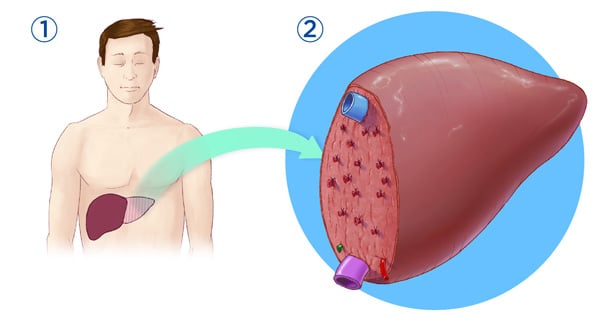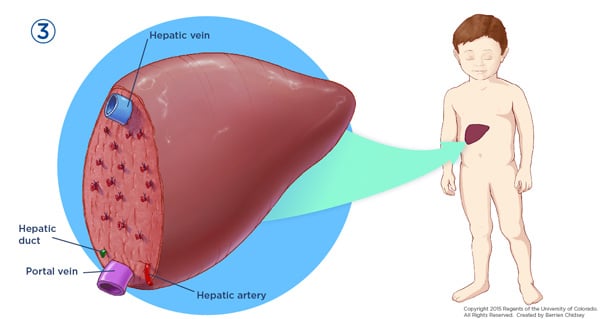- Doctors & Departments
-
Conditions & Advice
- Overview
- Conditions and Symptoms
- Symptom Checker
- Parent Resources
- The Connection Journey
- Calm A Crying Baby
- Sports Articles
- Dosage Tables
- Baby Guide
-
Your Visit
- Overview
- Prepare for Your Visit
- Your Overnight Stay
- Send a Cheer Card
- Family and Patient Resources
- Patient Cost Estimate
- Insurance and Financial Resources
- Online Bill Pay
- Medical Records
- Policies and Procedures
- We Ask Because We Care
Click to find the locations nearest youFind locations by region
See all locations -
Community
- Overview
- Addressing the Youth Mental Health Crisis
- Calendar of Events
- Child Health Advocacy
- Community Health
- Community Partners
- Corporate Relations
- Global Health
- Patient Advocacy
- Patient Stories
- Pediatric Affiliations
- Support Children’s Colorado
- Specialty Outreach Clinics
Your Support Matters
Upcoming Events
Mental Health Town Hall
Tuesday, April 23, 2024Join Children’s Hospital Colorado pediatric experts for a virtual...
-
Research & Innovation
- Overview
- Clinical Trials
- Q: Pediatric Health Advances
- Discoveries and Milestones
- Training and Internships
- Academic Affiliation
- Investigator Resources
- Funding Opportunities
- Center For Innovation
- Support Our Research
- Research Areas

It starts with a Q:
For the latest cutting-edge research, innovative collaborations and remarkable discoveries in child health, read stories from across all our areas of study in Q: Advances and Answers in Pediatric Health.


Pediatric Live-Donor Liver Transplants
We achieve some of the best outcomes in the nation by working with every medical and surgical specialty in the hospital to reimagine children’s lives.
Waiting on the United Network for Organ Sharing (UNOS) transplant list can be hard. Patients and families anxiously wait to reach the top of the list, hoping that the right sized organ becomes available as soon as possible. A live-donor liver transplant allows your child to avoid waiting on the UNOS transplant list for a deceased donor organ altogether.
What is a pediatric live-donor liver transplant?
A live-donor liver transplant is an amazing gift for a sick child. This liver transplant option involves removing a portion of a healthy adult’s liver to replace an entire sick liver in a child. The donor is usually a parent (living-related donor liver transplant), but can be any healthy adult with a matching blood type. This type of transplant is possible because the liver is a regenerative organ, which means that the donor’s liver will grow back to a normal size after the transplant. It also means that the transplanted liver will continue to grow as your child grows and develops. Learn more about becoming a living donor.
Before the transplant, surgeons look at the donor’s radiology images to review the size and shape their liver. Then, the surgeon decides what portion of the donor liver is needed for your child. Typically, if the adult is donating to a baby, only a small part of the donor’s liver is needed. Removing only a small portion of the liver makes the donor’s incision smaller and less painful, which helps the donor recover relatively quickly.
How does a live-donor liver transplant work?

- The donor surgery is performed at the University of Colorado Hospital, a premier adult transplant center and leading center in living donor transplants in adults, by the adult transplant team. The adult transplant surgeon removes the left lateral segment of the liver to use and replace your child’s sick liver.
- The adult transplant surgeon closes bile ducts and blood vessels on the cut edge of the liver. After surgery, the cut edge continues to heal and make a complete seal.

- Your child’s surgery occurs at almost the same time as the donor’s. Once the donor organ is removed, it is packaged and transported to Children's Colorado. The pediatric transplant surgeons perform your child's liver transplant giving them an optimal size liver that continues to grow as he/she matures.
Benefits of a live-donor liver transplant
- Live-donor transplants eliminate the time spent waiting for a donor organ to become available on the UNOS transplant list.
- Your child receives a healthy donor organ before their condition worsens, making the transplant easier on them.
Patient eligibility
- Almost all children are eligible for living donor liver transplant
- Any age child can receive a live-donor liver transplant
What can your child expect during recovery after a live-donor liver transplant?
At Children’s Colorado, the hospital stay after a liver transplant is 10 to 15 days. After going home from the hospital, your child will see a board certified pediatric transplant hepatologist twice a week until they are fully recovered.
Kids should be fully recovered within four to six weeks and can then return to normal activities. Even as they return to normal activities, your child will continue to see the transplant team several times per year to maintain ideal health. At Children’s Colorado, our goal is to give your child a normal quality of life without experiencing limitations from an organ transplant. This means that they will eat a normal diet, play normally, go to school, and participate in their favorite activities.
Frequently asked questions about living donor liver transplants
Who can be a liver donor?
Any healthy adult with a compatible blood type may be a potential donor for your child. A common misconception is that live donors must be blood relatives (living-related donor liver transplant). This is untrue. Any willing adult above the age of 18 may be a potential donor to a child in need.
An independent donor advocate helps to facilitate the donor evaluation separate from your child's transplant team. The evaluation includes a series of tests such as a blood type test, a CAT scan and an evaluation by an adult hepatologist and a transplant surgeon. During the donor evaluation, the doctors will determine if the adult’s overall health and their liver allow them to be suitable to make such a donation. Donors must be over the age of 18 and in good mental and physical health.
As the donor, what can I expect from the living donor liver transplant surgery?
When donating a portion of your liver to a child at Children’s Colorado, the adult donor’s surgery is performed at the University Of Colorado Hospital. Both hospitals are located on the Anschutz Medical Campus, within walking distance from each other. Once the donor’s liver is removed by the adult transplant team, it is carefully packaged and transported to the pediatric transplant surgeons performing the child’s surgery at Children’s Colorado.
What is recovery like for the donor?
Once surgery is complete, the donor remains in the hospital for an average of 5 to 8 days. If the donor lives outside the Denver metropolitan area, they may be asked to stay somewhere nearby for up to two weeks after the surgery. Depending on their rate of recovery, most donors are able to return to work after eight weeks (those with desk jobs may be able to return to work sooner than those with physically demanding jobs).
The liver is the only major organ in the body able to regenerate itself. The portion of the liver that was donated will start to regenerate very soon after surgery and will take about two months to return to normal size and function.
Why choose Children’s Colorado for a live-donor liver transplant?
A team of dedicated pediatric experts
Your entire transplant team, including all your doctors and nurses at Children’s Colorado, have extensive pediatric and pediatric transplant training, knowledge and expertise. Your team understands that children are not "just little adults." Every aspect of care at Children's Colorado is pediatric focused. When you and your child talk with them, they will explain medical information in a way that both you and your child will understand.
An integrated team of liver specialists planning for before and after a transplant
The liver team at Children’s Colorado includes specialists who will help you with pre- and post-transplant treatment options. Pediatric experts on the liver transplant team include:
- Pediatric transplant surgeons
- Pediatric transplant hepatologists
- Pediatric anesthesiologists
- Pediatric nurses
- Transplant coordinators
- Social workers
- Dietitians
- Psychologists
- Pediatric infectious disease specialists
- Pediatric radiology, including interventional radiology
More pediatric transplant experience than any other program in Denver or the Rocky Mountain Region
Children’s Colorado partners with the University of Colorado Hospital, where adult transplant surgeons perform over 100 liver transplants every year – making them a premier transplant center in the U.S. The combined live donor liver transplant team from University of Colorado Hospital and Children’s Colorado is considered one of the best in the country, with unparalleled experience and expertise in liver transplantation.
Other liver transplant options include:
Contact us
For more information on live-donor liver transplants, please contact the liver transplant team at 720-777-6011.
Resources
- Find more information on live-organ donation from UNOS.org.
- Be inspired by our patient’s transplant stories.
- Learn more about the Liver Transplant Program at Children’s Colorado



 720-777-0123
720-777-0123





